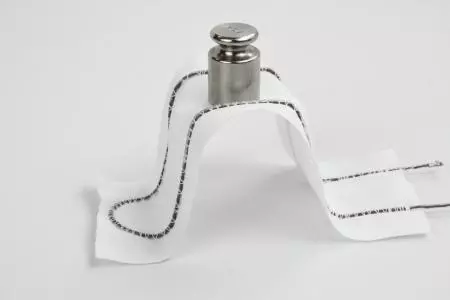A team of scientists at Yale University has developed a new “robotic fabric” that can change its shape and stiffness on demand or by sensing its environment. The material could one day be used in high-tech clothing, tents that set themselves up, or robotic parachutes.
To give the fabric a range of capabilities, the team created fibers with different abilities and wove them into everyday fabrics. The first fiber is an epoxy full of particles of an alloy called Field’s metal, which melts at the relatively low temperature of 62 °C (144 °F). That means it can be gently heated to make the fabric soft and malleable, then cooled to room temperature to lock it into a particular shape.
“Our Field’s metal-epoxy composite can become as flexible as latex rubber or as stiff as hard acrylic, over 1,000 times more rigid, just by heating it up or cooling it down,” says Trevor Buckner, lead author of the study. “Long fibers of this material can be sewn onto a fabric to give it a supportive skeleton that we can turn on and off.”
Using this technique, the team was able to make their smart material load-bearing, holding up a 50-g (1.8-oz) weight that would normally flatten a fabric right out. The team also applied a conductive ink that can be painted onto the fabric, creating sensors that can detect changes in the environment and let the material react accordingly.

“The conductive composite self-coagulates around the individual fibers and does not notably change the porosity of the fabric,” says Rebecca Kramer-Bottiglio, corresponding author of the study. “The sensors are visible, but don’t change the texture or breathability of the fabric, which is important for comfort in wearable applications.”
And finally, to make the material change shape and move, the team added a shape-memory alloy (SMA). This stuff can be programmed to “remember” a particular shape, so that after it’s deformed it can be triggered to jump straight back to that original form. In this case, the researchers flattened SMA wires into ribbons, so they could return the fabric to a flat shape on demand.
The researchers say that the robotic fabric could eventually be used to create self-deploying tents or parachutes, and assistive clothing.
The research was published in the journal Proceedings of the National Academy of Sciences and the team demonstrates the robotic fabric in the video below.
Source: Yale University





